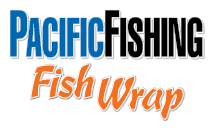Just got word that Southeast Alaska salmon gillnetters voted 132-80 against self-imposing a 1 percent landings tax to pay for marketing and other initiatives under a regional branding effort called Rainforest Wild (Deckboss, June 6).
It's the second time Southeast gillnetters have rejected the idea.
So what's next for Rainforest Wild?
"Everyone's just going to focus on fishing for right now and we'll reconvene later in the fall and decide next steps then," spokeswoman Elizabeth Dubovsky told me in an e-mail today.
Subscribe to:
Post Comments (Atom)


2 comments:
Hey Wesley,
Another interesting twist in the RSDA experiment.
The vote came pretty easy in PWS where folks sustained strong improvements in price from regional marketing. There is also a fairly simple species complex in PWS. Besides salmon (all five species with a different set of needs) there is some sablefish and herring. However, the vast majority of value resides in salmon. That helps make sense of where investments should go.
Bristol Bay is an even bigger no brainer in terms of its simplicity. Sockeye, sockeye and more sockeye. The big obstacle there was skepticism – an understandable trait in the seafood industry. But they battled it and now have what - $1 million annually to leverage more funds to market, build infrastructure, improve quality, etc. Given that ASMI usually floats around $10 – 15 million annually, played carefully the Bristol Bay group could accomplish a lot with their revenue stream.
Southeast is a bugger though. In my calculations, I estimated the total RSDA assessment from 2007 fish deliveries taxed at 1% would be just over $1 million. A pretty fair chunk, but
• It comes from 23+ separate fisheries.
• Half comes from the salmon seiners.
• The lowest levy was $48 coming from the Demersal Rockfish, Longline Under 60 permit. $48 will pay for drinks at the Seattle photographer's shoot. (They use fancy dishes.)
Furthermore, this does not count the troll fisheries (hand & power), IFQ sablefish, or IFQ halibut in the area because these fisheries are managed under a “Statewide” permit, not “Southeast”. The value of these three fisheries was $800K.
The complications are obvious.
• Each of these fisheries appear to have different needs.
• Along with diverse fisheries, they are spread along a very big region and needs appear different in each region.
• Drifters would only generated about $150K, enough to fund an administration and little else.
• Skepticism rates pretty high in Southeast just like in most other places.
But at the same time, there are good reasons to continue looking at this economic development mechanism.
• This diverse region and its fisheries do have similar needs. For instance, all fishermen could probably use harbor cranes or dedicated dock space to work on.
• Permit holders in different fisheries are often the same individuals.
• Self-investment will leverage much more interest and investment from larger funders like Dept. of Transportation and Economic Development Administration.
Starting an RSDA in Southeast is daunting and might require some mountains to move. Here’s some ideas for people to scoff at -
• Board structure must be clearly defined. How are decisions made? How can even the smallest tax contributor see their dollars help their fishery. These kinds of questions must be nailed down and clearer than a bell.
• The Southeast RSDA might be most effective as a pass through organization. If a permit group wants all their money going to an outside marketing firm (and the $10 sodas), than just have the RSDA receive a cost-basis admin fee for handling the contract and money, and send the rest away. Make it simple.
• Look at organizing with several permit groups at once rather than one by itself. If the salmon seine, salmon drift, sea cucumber diver, dungy crabbers – less than 200 pots, and one of the herring fisheries (Sitka roe or Northern pound) could come together and work this through, it might be able to gather the support needed for a positive vote.
Anyone know the words to Kumbaya?
Thanks for the comments, Glenn.
Another complicating factor having the vote this year was the increases in salmon prices over the last couple of years. I sense that fishermen believe things will be fine in the future and have already forgotten the prices paid in 2001-2003.
My biggest concern is complacency in our industry. Complacency is what allowed salmon farmers to inflict some serious pain on our industry in the last decade. Huge strides have been made in our industry in the last 5-10 years, but salmon farmers (and other protein producers) will to progress and innovate in their industries and our industry needs to keep up the pace in order to compete.
I see RDSAs as playing a role in the continued development of our industry (from increased quality on boats, to processing efficiencies, to product development) in a way that gives fishermen an element of control and input.
Maybe someday a majority of the fleet will agree?
Post a Comment